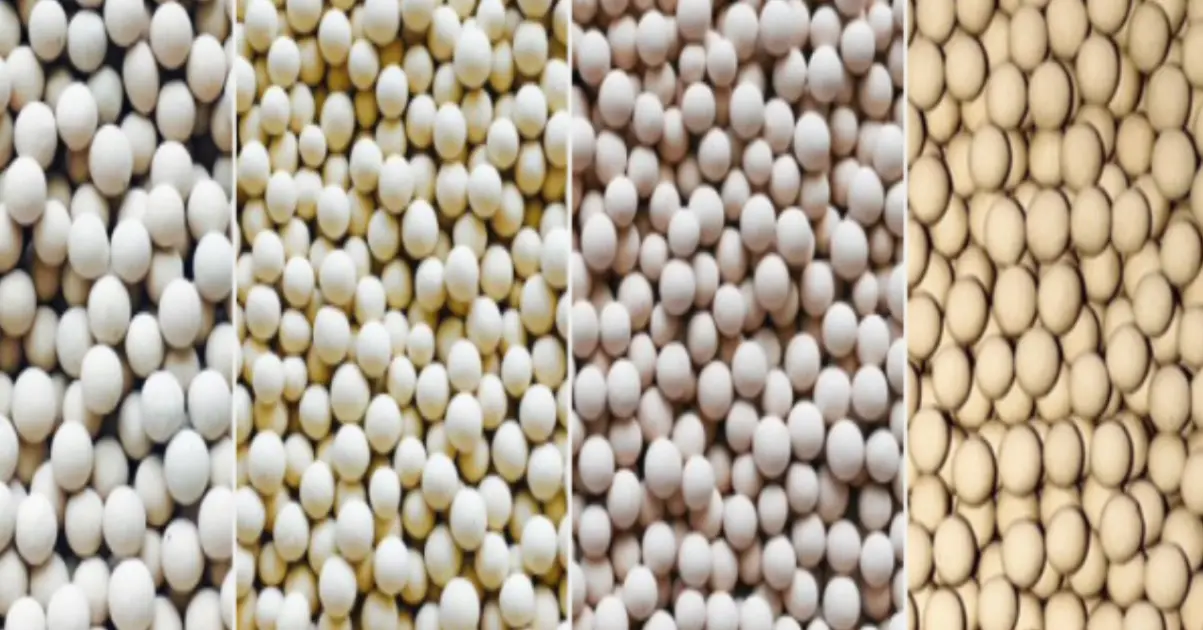A molecular sieve is a crystalline adsorbent material composed mainly of aluminosilicates (zeolites) that remove moisture and impurities from gases and liquids. These molecular Sieve zeolite materials have uniform pore structures that selectively trap molecules based on size, shape, and polarity.
In industrial settings, molecular Sieve plays a vital role in drying and purification ensuring reliability in processes such as natural gas dehydration, air drying, and gas separation.
Suppliers like OozeChem provide high quality molecular sieve desiccants in UAE, Saudi Arabia, Oman, and the Gulf region, ensuring optimal performance for critical industrial applications.
How Does Molecular Sieve Work?
Understanding how molecular sieve work begins with their adsorption capability. Unlike adsorption (where moisture is adsorbed into the material), adsorption involves capturing molecules on the surface within uniform crystalline pores.
Each molecular sieve type has pores of fixed diameter (in angstroms, Å). When a gas or liquid passes through, smaller molecules like water enter these pores and become trapped, while larger molecules are excluded.
This selective adsorption makes molecular Sieve ideal for industrial drying and purification processes. Once saturated, they can be regenerated by heating, restoring their adsorption efficiency and extending lifespan.
Types of Molecular Sieve
There are several types of molecular sieve, each designed with a specific pore size for different drying and purification needs. Choosing the right type helps improve performance and energy efficiency in industrial applications.
Molecular Sieve 3A
Molecular Sieve 3A has a pore size of 3 angstroms and is mainly used for removing water from ethanol, refrigerants, and other polar liquids. Because of its small pore size, it captures water molecules while leaving larger compounds untouched. It can be regenerated at around 250°C and reused multiple times, making it a reliable choice for moisture control.
See our Molecular sieve 3A page here!
Molecular Sieve 4A
With a pore size of 4 angstroms, Molecular Sieve 4A is widely used for drying air, natural gas, and solvents. It provides efficient moisture removal in a range of industrial systems. This type is easy to regenerate, usually between 200°C and 250°C, and offers stable performance over repeated cycles.
Here is our best quality 4A molecular sieve
Molecular Sieve 5A
Molecular Sieve 5A features a 5 angstrom pore size and is ideal for purifying gases such as hydrogen. It also helps remove carbon dioxide and other impurities from process streams. Regeneration typically takes place at 250–350°C, keeping it effective for continuous operations in refining and gas separation.
Take a look at Oozechem’s 5A molecular sieve.
Molecular Sieve 13X
Molecular Sieve 13X has the largest pore size around 10 angstroms allowing it to trap larger molecules like CO₂ and sulfur compounds. It’s often used for air purification and gas treatment where a higher adsorption capacity is needed. It can be regenerated between 250°C and 350°C for extended use.
Check our product 13X Molecular Sieve
Molecular Sieve vs Silica Gel
Both molecular Sieve vs silica gel are used for moisture control, but their properties and applications differ.
| Feature | Molecular Sieve | Silica Gel |
| Structure | Crystalline zeolite | Amorphous silica |
| Selectivity | Size & polarity specific | Non selective moisture adsorption |
| Drying Efficiency | Very high (dew points < –100 °C) | Moderate (down to ~40 % RH) |
| Regeneration | Fully regenerable by heat | Partial efficiency loss after cycles |
| Applications | Industrial gas/liquid drying, purification | Packaging & general moisture protection |
Molecular Sieve vs Activated Alumina
While activated alumina is also a common adsorbent, there are notable differences between the two.
| Feature | Molecular Sieve | Activated Alumina |
| Material Type | Synthetic zeolite | Porous aluminum oxide |
| Adsorption Selectivity | Highly selective | Broad but less precise |
| Best For | Trace water removal, gas separation | General moisture adsorption |
| Chemical Stability | Excellent | Good, but less selective |
| Common Use | Gas dehydration, PSA systems | Water treatment, fluoride removal |
Industrial Applications
- Industrial Drying and Purification: Ensures moisture free air, gases, and liquids in refineries and petrochemical plants.
- Gas Separation Molecular Sieve: Used in PSA (Pressure Swing Adsorption) systems for nitrogen and oxygen generation.
- Natural Gas Processing: Dehydrates gas streams before pipeline transport or LNG conversion.
- Hydrogen & Air Purification: Removes impurities like CO₂, H₂S, and sulfur compounds.
- Pharmaceutical & Packaging: Maintains dryness in moisture sensitive products.
- Refrigeration & HVAC: Prevents system freeze ups and corrosion.
See Our Comprehensive Guide to molecular sieve Applications!
Adsorption Capability and Regeneration
The adsorption capability of molecular Sieve depends on pore structure, temperature, and pressure.Their high surface area and uniform pores allow them to capture water and impurities at extremely low concentrations.
Once saturated, the Sieve can be regenerated using heat or vacuum:
- Temperature range: 200–350 °C
- Method: Thermal regeneration or purge gas drying
This regeneration process makes molecular Sieve a cost effective and sustainable solution for long term industrial use.
Conclusion
Understanding what a molecular sieve reveals its critical role in industrial drying and purification. These zeolite based desiccants provide superior adsorption, selectivity, and efficiency compared to silica gel or activated alumina.
From molecular sieve 3A to 13X, each grade supports unique industrial applications like natural gas drying, air purification, and gas separation ensuring optimal system performance across the UAE and Gulf region.
